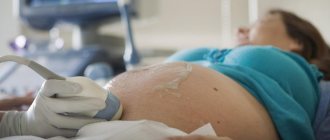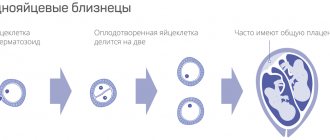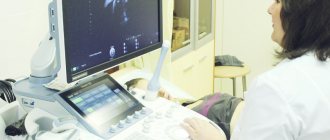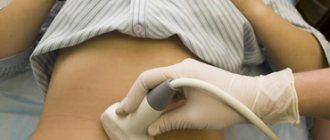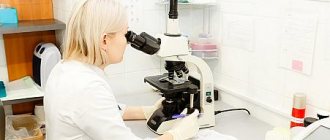Miscarriage means the termination of pregnancy before the beginning of the 22nd week, when the weight of the fetus has not yet reached 500 grams. Sometimes an interruption occurs in the first weeks after conception, when most women are not yet aware of their situation. There is a need for treatment if there is a threat of miscarriage in the early stages, especially if spontaneous abortion occurs repeatedly. Two failed pregnancies are a reason to start searching for the cause that leads to the development of this pathology.
According to statistics, about 15-20% of confirmed pregnancies end in miscarriages. Most of them occur in the early stages of embryonic development (up to 12 weeks). The most common cause is chromosomal abnormalities.
Features of treatment in case of threat
Treatment for threatened miscarriage in the early stages depends on many circumstances. It is determined individually and depends on the results of the examination, ultrasound, blood and urine tests. The examination reveals hormonal levels, structural features of the uterus and organs of the reproductive system, and infectious processes in the body. The set of measures taken is aimed at identifying an unfavorable condition and its subsequent correction using the most effective methods.
The main goal of treatment for the threat of miscarriage in the early stages is to relieve the tone of the uterus, relax the organ, stop bleeding and prolong pregnancy if possible. However, in European countries this treatment is not considered appropriate. Experts argue that the death that occurred is the result of natural selection, when a weak and non-viable organism is destroyed, which can be facilitated by genetic abnormalities and chromosomal rearrangements.
In Russia, a different approach is practiced. A woman who is in danger of losing her fetus is prescribed bed rest, sexual rest, and physical and emotional stress is prohibited. A complete, balanced diet is recommended; in most cases, maintenance medications are indicated.
Preparatory measures
Gastroscopy is an endoscopic examination of the esophagus, stomach and duodenum using a flexible tube with a camera at the end. Fibrogastroduodenoscopy of the stomach is a diagnostic procedure that is also used for biopsy, i.e. sampling tissue for research.
The gastroenterologist referring for FGDS warns of the need to prepare for the procedure. Preparation is carried out according to the following rules:
- Two days before gastroscopy of the stomach, you will have to give up spicy, fatty foods, chocolate, beans, and nuts. This is important if a stomach ulcer is suspected.
- It is prohibited to consume alcoholic beverages and medications containing ethyl alcohol.
- Dinner should be low in fat, exclude meat, fish, cheese, mayonnaise, foods with a lot of fiber (wholemeal bread, cabbage, radishes, beans). You can eat mashed potatoes, buckwheat, oatmeal, cheese, stewed chicken meatballs, soup, juice. It is not advisable to eat more after dinner.
- On the day of gastroscopy, you should not eat or drink.
- Do not smoke before gastroscopy, this leads to the formation of gastric juice and complicates the study.
- On the day of the procedure, the use of tablets, syrups, and capsules of medications is prohibited (aspirin, warfarin and other blood thinners should not be taken 10 days before gastroscopy, they can cause bleeding).
- Tell your doctor if you have a tendency to allergies (especially to painkillers), or about the presence of diseases (heart failure, myocardial infarction, aortic aneurysm, diabetes mellitus, epilepsy, previous operations).
- It is recommended to undergo a blood clotting test.
- For fibrogastroduodenoscopy, take a referral, documents, necessary test results, comfortable clothes (robe), and remove jewelry.

After a miscarriage - medical care tactics

Typically, a miscarriage is accompanied by increasing bleeding from the vagina and the release of clots, severe pain in the lumbar region. As a rule, treatment is not required after early spontaneous abortion. The failed mother is provided with assistance in the hospital upon her request and sent home. Sometimes the embryo dies in the uterus, but its death does not cause alarming symptoms. The doctor learns about his death only after an ultrasound and other procedures.
Treatment is aimed at the exit of the formed biological materials from the uterus, if this does not happen immediately and naturally. Several methods can be used here:
- Waiting tactics under the supervision of a specialist.
- Drug therapy.
- Surgical intervention (curettage, vacuum aspiration).
Waiting tactics involve the body naturally ridding itself of the embryo. Ideally, the amniotic sac should be released entirely, with the embryo placed inside it and the amniotic fluid discharged, although a phased release is also possible. From the moment the embryo dies in the uterus until it leaves the organ naturally, several weeks can pass. However, the medical community does not recommend setting a waiting period of more than a month. Otherwise, there is a high risk of developing sepsis due to an infection formed inside.
Treatment can also be carried out with medications, the action of which is aimed at the release of biological material from the uterine cavity as a result of its contractions. The method works well when a frozen pregnancy occurs before the 8th week.
Surgical intervention is a radical solution to the problem. To reduce the risk of an inflammatory process, experts suggest performing gynecological curettage, which involves cleaning the inner lining and inner cavity of the uterus. The procedure takes no more than 45 minutes and is performed using general anesthesia. The patient does not feel pain or discomfort, as she is immersed in a state of deep sleep. A more gentle method is vacuum aspiration, when the contents of the uterus are removed with a special suction that does not damage the tissue.
What is gastroscopy of the stomach
This is an endoscopic method for examining the gastric mucosa using a special device - a gastroscope.
The device is a long hollow tube of small diameter, one end of which is equipped with a video camera and a light bulb (this part of the tube is inserted through the mouth into the esophagus and lowered into the patient’s stomach), and the second end of the tube is connected to a computer, on the monitor of which an image of what “sees” is displayed. » device from inside the gastrointestinal tract.
The gastroscope also has special holes through which the doctor can insert instruments for biopsy or other surgical procedures. Thanks to this, the procedure allows you to combine not only diagnostics, but also therapeutic functions.
Preventing the threat of miscarriage

Despite the many reasons why a miscarriage can occur, there are ways to reduce the risk of developing an anomaly during pregnancy. Measures to prevent spontaneous abortion form a solid basis of recommendations in preparation for conception. They affect both parents, not just the woman.
A couple who decides to have a child is advised to take care of their own health at the planning stage. It is advisable to undergo genetic compatibility testing. Do not despair if tests reveal a low degree of compatibility for having children. Treatment for threatened miscarriage in the early stages will begin long before there is a danger of fetal loss.
It is also important for both partners to be tested for hidden infections, many of which can be transmitted to the baby during pregnancy, causing multiple malformations and deformities. For preventive purposes, in order to minimize the possibility of the need for treatment after a miscarriage, it is recommended to avoid public places with large crowds of people. Some types of infections are transmitted by airborne droplets, so infection often occurs spontaneously, remaining unattended until the consequences appear. Do not come into contact with their possible carriers; when influenza and acute respiratory infections become more active, try to stay at home more.
A man and woman who decide to become parents should try to eradicate bad habits - smoking, alcohol abuse and drug addiction. A well-balanced diet and properly selected vitamins will help you lose excess weight, improve your health and improve your well-being. A woman should avoid heavy lifting, excessive physical exertion, abdominal impacts, hypothermia, and overheating in the sun.
What you can’t and can’t eat before gastroscopy of the stomach
For a few days, it is advisable to eliminate nuts, smoked meats, chocolate, fried and fatty foods, legumes, cabbage, fresh vegetables and fruits and other foods that cause increased gas formation. You can't drink carbonated drinks.
It is recommended to eat boiled meat, oatmeal, buckwheat porridge, and fermented milk products per day.
It is not advisable to consume alcoholic beverages 2-3 days before the test and are strictly contraindicated the day before.
It should be remembered that milkshakes and milk in their pure form are not a drink, but a complete food. And a glass of milk drunk 4-8 hours before the test is equivalent to a meal, which means it is also contraindicated.
How long after gastroscopy can you eat?
If local anesthesia of the pharynx with lidocaine was used during gastroscopy, then you can eat as soon as the sensitive receptors of the tongue and pharynx are restored and the medicine stops working - 10-15 minutes after the end of the manipulation.
If intravenous anesthesia was performed, 1.5-2 hours after regaining consciousness, provided that no complications arose during the study.
You should not eat hot, spicy food that can irritate the mucous membrane, especially if it has undergone mechanical irritation - a biopsy.
Food should be easily digestible, preferably warm. Slimy porridge, cottage cheese, fermented milk products, boiled chicken, mashed potatoes are quite acceptable as a meal.
Preparing for a new pregnancy
Unfortunately, sometimes any tricks of doctors and couples to save the child end in failure. What happened becomes a heavy blow for both the failed mother and the father. Not wanting to come to terms with what happened, many strive to immediately conceive again, forgetting that a woman’s body has little resemblance to the incubation system. Full recovery takes time. On average, at least six months should pass before a new pregnancy. During this period, future parents gain balance, regain strength and begin to strive to achieve their goals. Do not forget that pregnancy can occur immediately after the end of menstruation. To prevent the process from becoming spontaneous and occurring unexpectedly, it is important to consult about the prescription of contraceptive drugs.
Health must be treated with special care if the first birth occurs after the age of 30 years. To be sure that things are going well, you should consult a doctor immediately after learning about pregnancy and attend every appointment he recommends.
What does gastroscopy of the stomach show and how is it performed?
The camera at the end of the endoscopic device, entering through the esophagus into the stomach, allows you to visualize its inner wall, the mucous membrane, defects and growths on it, and the contents of the organ: mucus, bile, blood.
The procedure can be carried out plannedly, with the preparation of the patient, and also as an emergency procedure in case of serious life-threatening conditions.
The patient is placed on his left side with a cushion under his head. The oropharynx is treated with lidocaine spray to reduce the gag reflex. Wait a few minutes until the “freezing” effect occurs.
A mouthpiece is inserted into the patient's mouth to prevent the jaws from closing during the procedure. The end of the device with a video camera at the end is placed on the root of the tongue and the patient is asked to make swallowing movements. Gently, with minimal pressure, the doctor moves the device along the esophagus, reaching the gastric cavity.
By turning the endoscope, the doctor examines the mucous membrane, cardiac, pyloric region, and fundus of the stomach. If there are indications, a biopsy can be taken through a probe - a piece of mucous membrane that has aroused the doctor’s suspicions. The image that the endoscope “sees” is displayed on the monitor screen, allowing the doctor and assistants to examine the gastric walls in detail.
How long does the procedure take?
If the picture that the doctor sees does not arouse his suspicions and does not force him to study the inner lining in more detail, the procedure will go faster. If no stomach problems are detected, inserting and removing the tube may take 5-7 minutes
If there are areas inside the gastrointestinal tract that require deeper visual examination, or a biopsy or surgical manipulation is required, then gastroscopy may take 15-30 minutes
- doctor's professionalism
- the patient's mood and willingness to follow the doctor's instructions
If the patient is calm and balanced, listens to the commands of the medical staff and follows instructions, breathes correctly during the procedure, and does not interfere with the doctor with extraneous actions, the speed of the examination increases significantly.
“Swallowing a pipe” is not a pleasant procedure, but it would not be fair to call it painful. It hurts - no. Unpleasant - yes. Typically, patients are frightened by the very fact that a foreign body - an endoscope - will be inserted into the esophagus.
To reduce the degree of discomfort during manipulation, a positive attitude, calmness and trust in the doctor are important.
FEGDS value
According to the data obtained from FEGDS, the gastroenterologist draws a conclusion about the health status of the gastrointestinal tract, the need for additional examinations, and prescribes individual treatment, taking into account all the features of the course of the disease.
Also, during the FEGDS procedure, the doctor can carry out some therapeutic manipulations using medications. They are introduced into the stomach cavity through a probe and directed to a specific location, allowing for targeted action on the identified defect.
